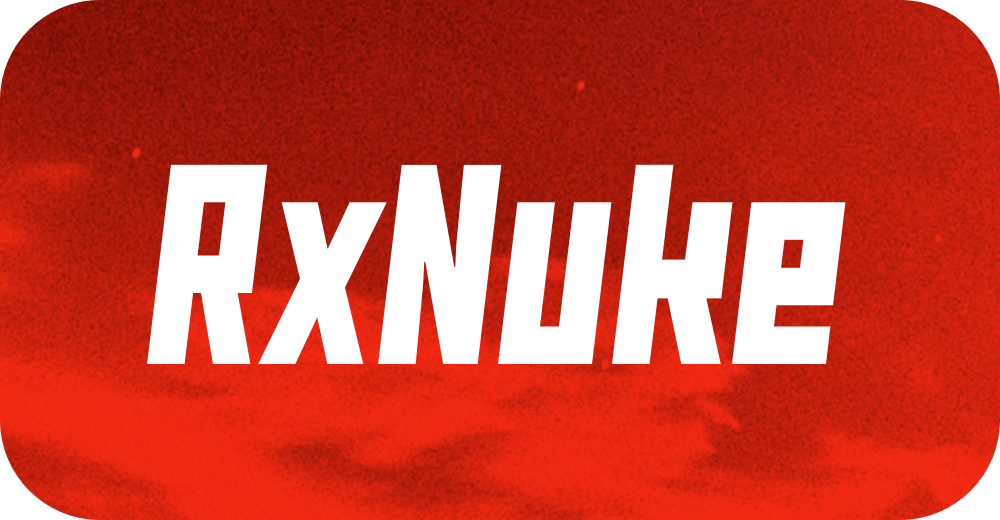This repository contains RxSwift extensions for Nuke as well as examples of common use cases solved by Rx.
Usage
RxNuke provides a set of reactive extensions for Nuke:
extension Reactive where Base: ImagePipeline {
public func loadImage(with url: URL) -> Single<ImageResponse>
public func loadImage(with request: ImageRequest) -> Single<ImageResponse>
}A
Singleis a variation ofObservablethat, instead of emitting a series of elements, is always guaranteed to emit either a single element or an error. The common use case ofSingleis to wrap HTTP requests. See Traits for more info. {:.info}
Here's a basic example where we load an image and display the result on success:
ImagePipeline.shared.rx.loadImage(with: url)
.subscribe(onSuccess: { imageView.image = $0.image })
.disposed(by: disposeBag)Going From Low to High Resolution
Let's say you want to show a user a high-resolution image that takes a while it loads. You can show a spinner while the high-resolution image is downloaded, but you can improve the user experience by quickly downloading and displaying a thumbnail.
As an alternative, Nuke also supports progressive JPEG. To learn about it, see a dedicated guide. {:.info}
You can implement it using concat operator. This operator results in a serial execution. It starts a thumbnail request, waits until it finishes, and only then starts a request for a high-resolution image.
Observable.concat(pipeline.rx.loadImage(with: lowResUrl).orEmpty,
pipeline.rx.loadImage(with: highResUtl).orEmpty)
.subscribe(onNext: { imageView.image = $0.image })
.disposed(by: disposeBag)
orEmptyis a custom property that ignores errors and completes the sequence instead (equivalent tofunc catchErrorJustComplete()from RxSwiftExt. {:.info}
public extension RxSwift.PrimitiveSequence {
var orEmpty: Observable<Element> {
asObservable().catchError { _ in .empty() }
}
}Loading the First Available Image
Let's say you have multiple URLs for the same image. For example, you uploaded the image from the camera to the server; you have the image stored locally. When you display this image, it would be beneficial to first load the local URL, and if that fails, try to download from the network.
This use case is very similar to Going From Low to High Resolution, except for the addition of the .take(1) operator that stops the execution when the first value is received.
Observable.concat(pipeline.rx.loadImage(with: localUrl).orEmpty,
pipeline.rx.loadImage(with: networkUrl).orEmpty)
.take(1)
.subscribe(onNext: { imageView.image = $0.image })
.disposed(by: disposeBag)Load Multiple Images, Display All at Once
Let's say you want to load two icons for a button, one icon for a .normal state, and one for a .selected state. You want to update the button, only when both icons are fully loaded. This can be achieved using a combineLatest operator.
Observable.combineLatest(pipeline.rx.loadImage(with: iconUrl).asObservable(),
pipeline.rx.loadImage(with: iconSelectedUrl).asObservable())
.subscribe(onNext: { icon, iconSelected in
button.isHidden = false
button.setImage(icon.image, for: .normal)
button.setImage(iconSelected.image, for: .selected)
}).disposed(by: disposeBag)Showing Stale Image While Validating It
Let's say you want to show the user a stale image stored in disk cache (Foundation.URLCache) while you go to the server to validate if the image is still fresh. It can be implemented using the same append operator that we covered previously.
let cacheRequest = URLRequest(url: imageUrl, cachePolicy: .returnCacheDataDontLoad)
let networkRequest = URLRequest(url: imageUrl, cachePolicy: .useProtocolCachePolicy)
Observable.concat(pipeline.rx.loadImage(with: ImageRequest(urlRequest: cacheRequest).orEmpty,
pipeline.rx.loadImage(with: ImageRequest(urlRequest: networkRequest)).orEmpty)
.subscribe(onNext: { imageView.image = $0.image })
.disposed(by: disposeBag)See "Image Caching" to learn more about HTTP cache. {:.info}
Auto Retry
Auto-retry with an exponential backoff of other delay options (including immediate retry when a network connection is re-established) using smart retry.
pipeline.rx.loadImage(with: request).asObservable()
.retry(3, delay: .exponential(initial: 3, multiplier: 1, maxDelay: 16))
.subscribe(onNext: { imageView.image = $0.image })
.disposed(by: disposeBag)Tracking Activities
Suppose you want to show an activity indicator while waiting for an image to load. Here's how you can do it using ActivityIndicator class provided by RxSwiftUtilities:
let isBusy = ActivityIndicator()
pipeline.rx.loadImage(with: imageUrl)
.trackActivity(isBusy)
.subscribe(onNext: { imageView.image = $0.image })
.disposed(by: disposeBag)
isBusy.asDriver()
.drive(activityIndicator.rx.isAnimating)
.disposed(by: disposeBag)In a Table or Collection View
Here's how you can integrate the code provided in the previous examples into your table or collection view cells:
final class ImageCell: UICollectionViewCell {
private var imageView: UIImageView!
private var disposeBag = DisposeBag()
// <.. create an image view using your preferred way ..>
func display(_ image: Single<ImageResponse>) {
// Create a new dispose bag, previous dispose bag gets deallocated
// and cancels all previous subscriptions.
disposeBag = DisposeBag()
imageView.image = nil
// Load an image and display the result on success.
image.subscribe(onSuccess: { [weak self] response in
self?.imageView.image = response.image
}).disposed(by: disposeBag)
}
}Requirements
| RxNuke | Swift | Xcode | Platforms |
|---|---|---|---|
| RxNuke 5.0 | Swift 5.6 | Xcode 13.3 | iOS 13.0 / watchOS 6.0 / macOS 10.15 / tvOS 13.0 |
| RxNuke 4.0 | Swift 5.6 | Xcode 13.3 | iOS 13.0 / watchOS 6.0 / macOS 10.15 / tvOS 13.0 |
| RxNuke 3.0 | Swift 5.3 | Xcode 12.0 | iOS 11.0 / watchOS 4.0 / macOS 10.13 / tvOS 11.0 |
License
RxNuke is available under the MIT license. See the LICENSE file for more info.
